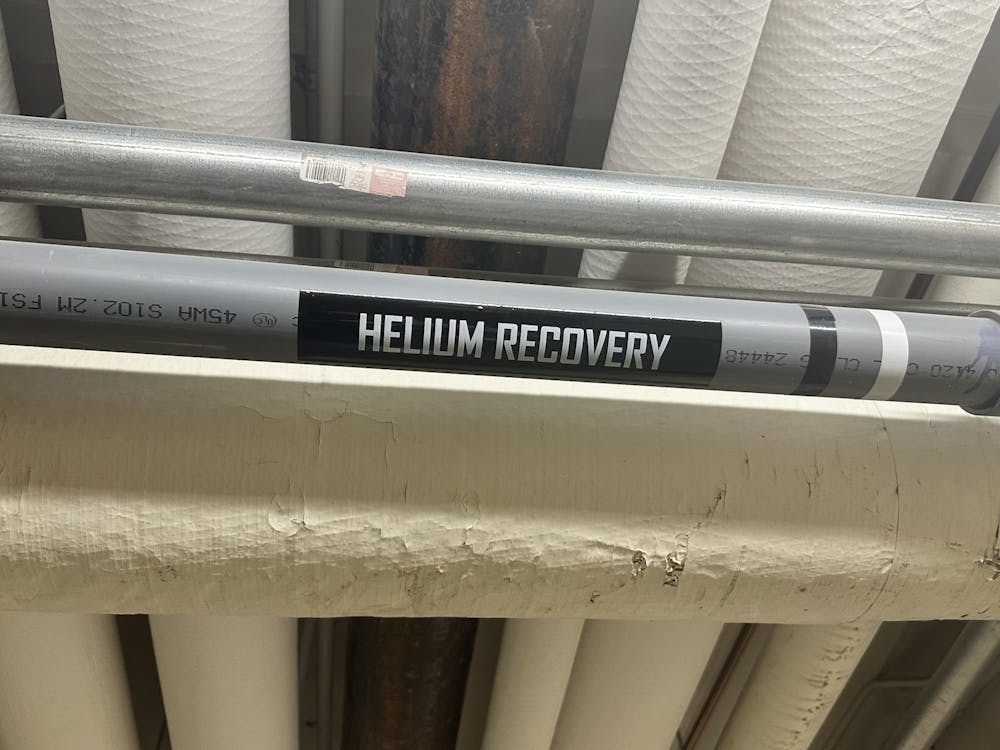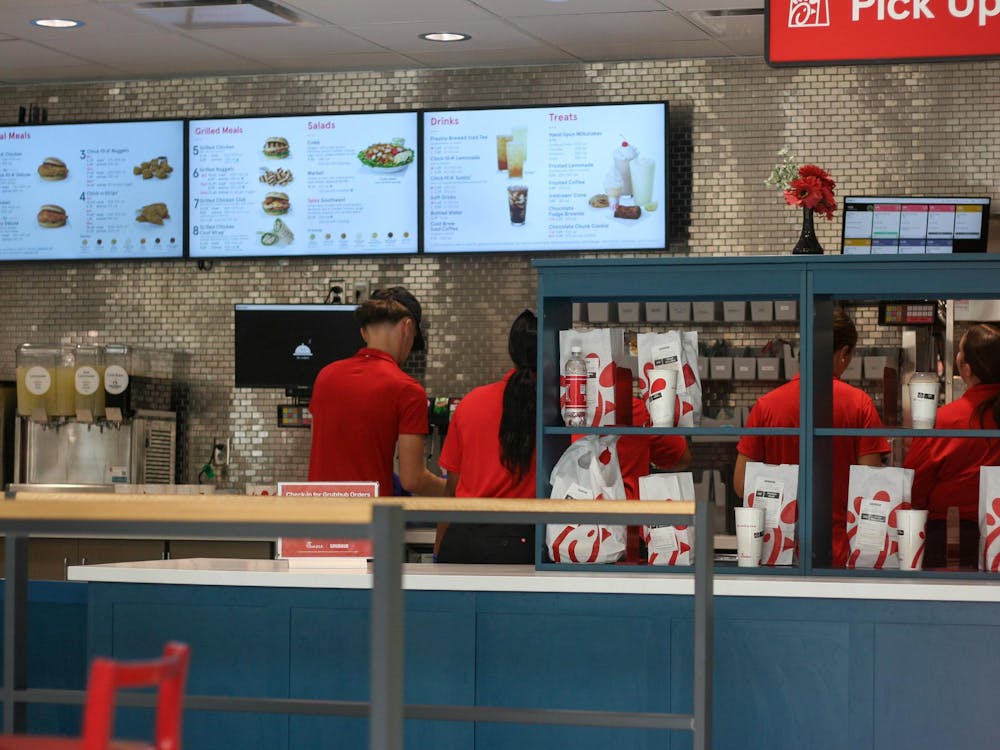Scattered around the Hughes Hall basement chemistry lab lies a series of copper pipes snaking their way around the building. To regular onlookers, the pipes look like any other utility pipe. Little do they know that these copper pipes are saving Miami University hundreds of thousands of dollars each year.
The chemistry department uses substantial amounts of helium — a nonrenewable resource that, when released into the atmosphere, is gone forever — in its nuclear magnetic resonance (NMR) and electron paramagnetic resonance (EPR) spectroscopy. This problem inspired Robert McCarrick, Miami University’s EPR specialist, to do something about it, resulting in the purchase of a helium reclamation system.
The helium reclamation system captures burnt-off helium gas from the NMR and EPR spectrometers, converting it into liquid helium and storing the liquid to be used for magnet fills and other necessary functions.
“We liquefy about 5,000 liters of liquid helium a year,” McCarrick said. “To put that in normal terms … we capture about 300,000 party balloons worth of helium per year.”
In years past, McCarrick was eyeing a way to spearhead the project with little success until 2012, when a national helium shortage seized the nation, causing the price of liquid helium to skyrocket from $7 per liter in 2008 to $12 per liter. McCarrick saw this event as an opportunity to convince the university to invest $500,000 to install the system.
Currently, the price of liquid helium is $40 per liter. With the helium reclamation system, Miami saves approximately $100,000 a year in costs associated with buying helium. This figure considers the costs of maintaining the system and providing the immense electricity required to liquefy the helium.
“Some other universities have actually had to shut down their high field NMRs because the cost got too high to run them,” McCarrick said. “If we didn’t have [the helium reclamation system], it would be a disaster.”
Miami’s 850 MHz NMR spectrometer, used to study molecules' structure, is the facility's biggest NMR magnet. It is one of the first things shown to prospective chemistry students when visiting campus. To keep the magnet running, it must be filled with liquid helium every few months.
Anne Carroll, Miami University’s NMR Instrumentation Specialist, is grateful for the helium reclamation system not only because of the cost savings but also the logistical challenges of obtaining and transporting liquid helium.
“There have been [helium] shortages … and if that coincides with when you need it, that could mean the difference between having an NMR and not,” Carroll said. “There’s also the act of transporting helium … [and] some can get lost … but you’re still paying for it.”
According to McCarrick, Miami was one of the first universities nationwide to adopt such a system, preventing irreversible damage to the equipment and keeping EPR and NMR research alive.
“I am so grateful and so impressed that Rob had the foresight to make this a priority as early as he did,” Carroll said. “Before many people were thinking about the dwindling supply and increased demand for liquid helium.”
Enjoy what you're reading?
Signup for our newsletter
Not only is the system cost-saving, but it’s self-sustainable, allowing Miami students to utilize the research equipment for years to come.




